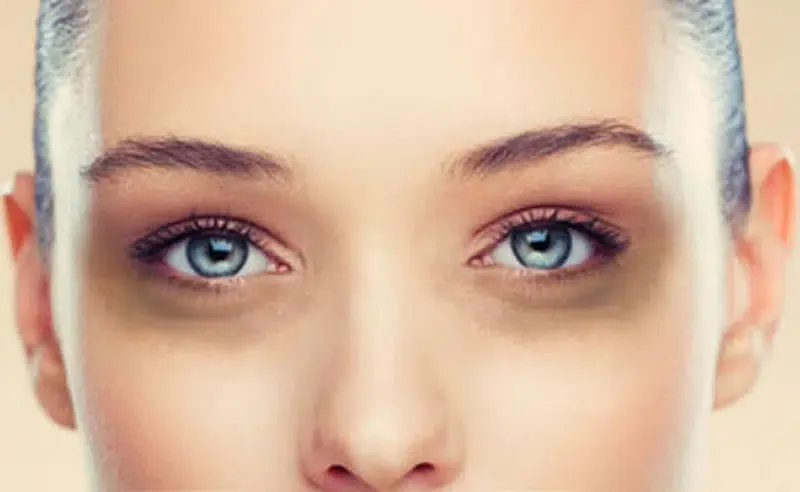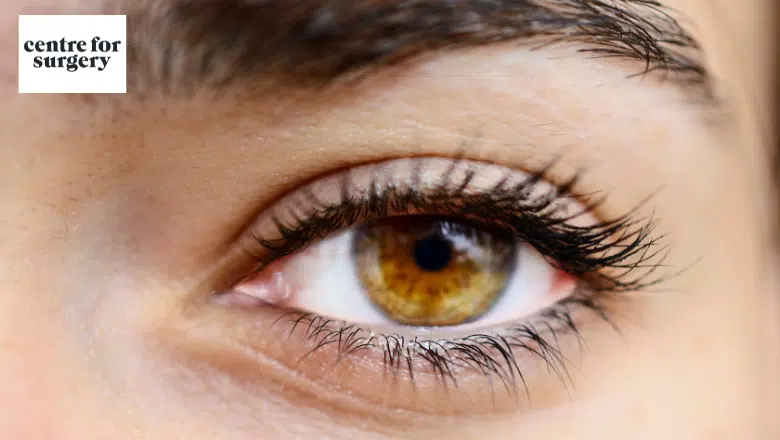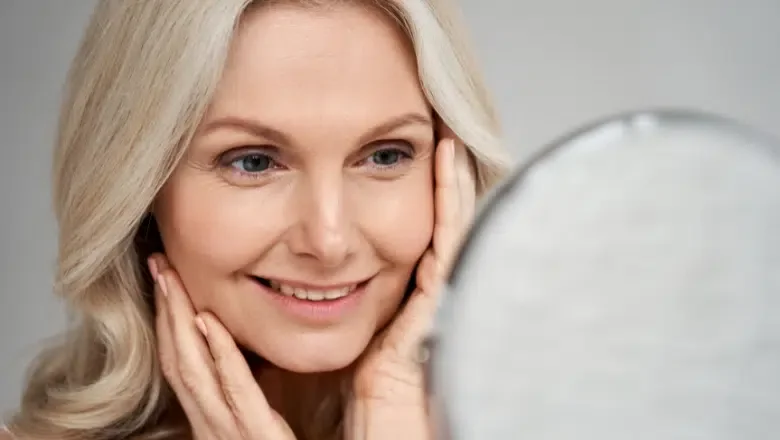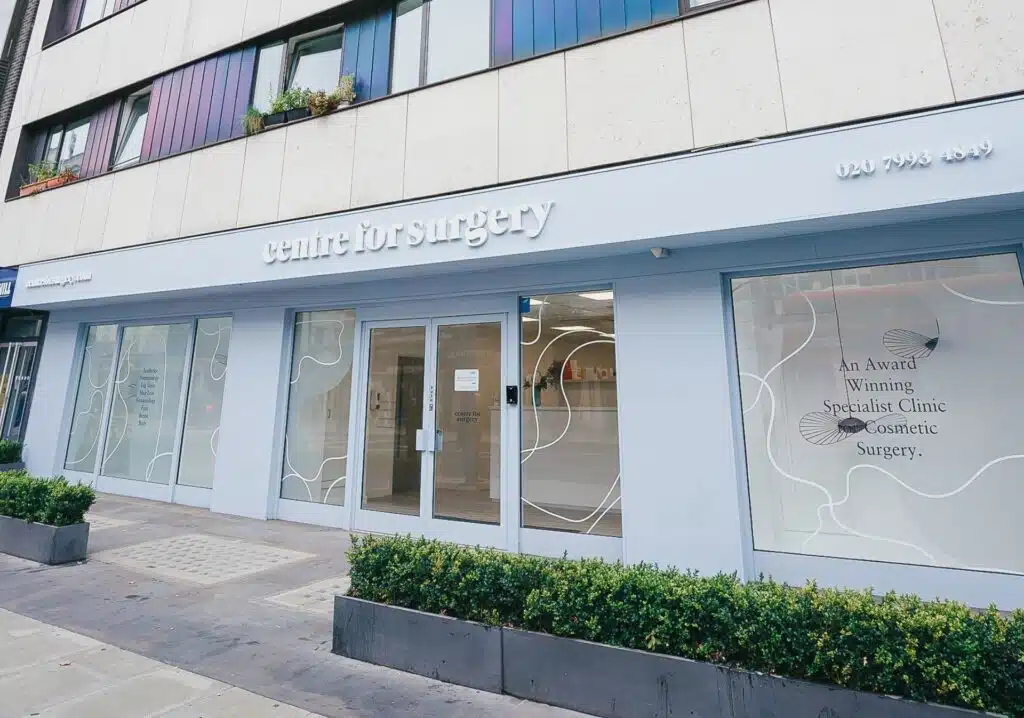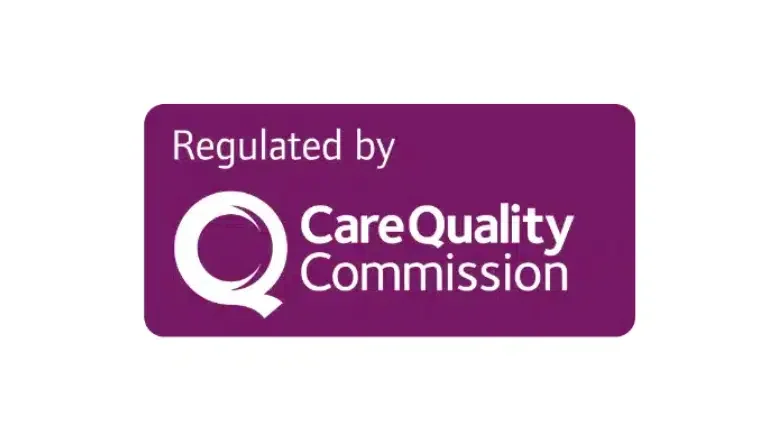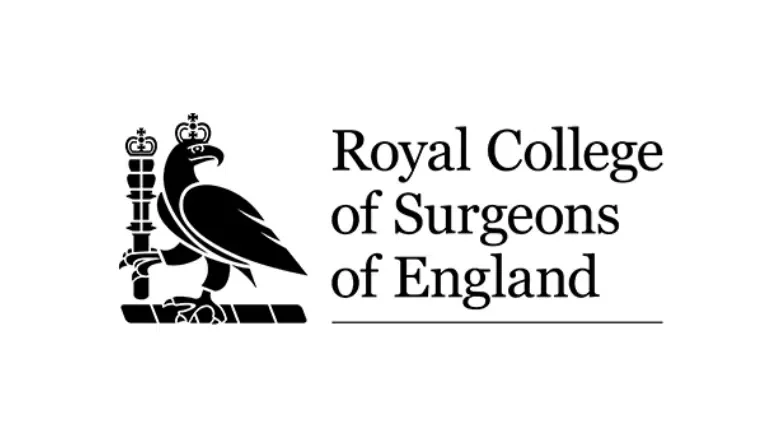Understanding and Managing Dark Circles Under the Eyes
Dark circles under the eyes, often humorously referred to as ‘panda eyes’, are a widespread concern shared by many. Contrary to popular belief, these shadowy under-eye areas are not solely the result of inadequate sleep. In fact, several factors contribute to the formation of dark circles, making them a multifaceted issue.
RELATED: Bags Under The Eyes and Dark Circles – Causes and Treatments
Firstly, it’s essential to recognise that the skin under our eyes is incredibly delicate and thin, making any discolouration more noticeable. Various factors can cause this discolouration.
What Causes Dark Circles Under the Eyes?
Enhancing Sleep Quality to Combat Dark Circles Under the Eyes
Adequate sleep plays a pivotal role in preventing and reducing dark circles under the eyes, commonly referred to as ‘panda eyes’. This issue is particularly prevalent among school-aged children and individuals of all ages who experience sleep deprivation. Addressing your sleep habits is crucial if you notice that your dark circles become more pronounced with insufficient sleep.
The primary solution to this problem is straightforward – prioritise and increase the duration of your sleep. However, implementing this may require several lifestyle adjustments. One key strategy is to create a calming pre-sleep routine. This means turning off electronic devices at least 15 minutes before bedtime to avoid preoccupation and mental stimulation. Instead of engaging in activities like checking emails or social media, allow yourself a period of relaxation, free from any mentally demanding tasks.
Caffeine consumption is another critical aspect to consider. To ensure a restful night’s sleep, consider reducing or entirely eliminating caffeine from your diet. If the taste of coffee is an essential part of your daily routine, switching to decaffeinated options could be a beneficial compromise.
Physical activity also plays a significant role in promoting better sleep. If your current lifestyle lacks exercise, find simple ways to incorporate more physical activities into your day. Opt for stairs instead of elevators, or extend your walk to the bus stop. Being physically tired can facilitate falling asleep more quickly. However, it’s important to avoid intense workouts right before bedtime, as they can leave you feeling more energised instead of relaxed.
It’s also advisable to associate your bed with sleep alone, especially if you struggle with sleep deprivation. Engage in reading or watching TV in a different area, like on a sofa, to reinforce this association. Moreover, investing in a comfortable sleeping environment can significantly enhance the quality of your sleep. This includes choosing the right bedding, such as a latex mattress, an adjustable slatted bed base, and a latex pillow. Comfortable blankets and pyjamas also contribute to creating an ideal sleeping atmosphere.
Managing Dark Circles from Sun Exposure: Effective Skincare Strategies
Dark circles under the eyes can be exacerbated by sun exposure, often due to the fine wrinkles it causes, which can create an illusion of darker skin. To address this specific cause, the use of eye serums and moisturising creams is highly recommended.
These skincare products are formulated to hydrate and rejuvenate the skin, thereby reducing the appearance of wrinkles and fine lines that contribute to dark circles. However, caution must be exercised when applying these creams. It’s imperative to avoid direct contact with the eyes, as this can lead to irritation or potential damage to the cornea.
To ensure safe application, eye creams should be applied no closer to the eye than just below the lower eyelashes. This precaution prevents the product from accidentally getting into the eyes. The method of application is also crucial. Using the ring finger or the little finger to apply these creams is advised because these fingers naturally exert the least amount of force, reducing the risk of applying too much pressure on the delicate under-eye area.
In addition to targeted eye creams, protecting the skin from further sun damage is essential. Applying sunblock around the eye area is a key preventative measure. It’s important to choose sunblock products that are safe for use around the eyes and offer adequate protection against UVA and UVB rays.
Addressing Dark Circles Caused by Extra Pigmentation
Dark circles under the eyes can often be attributed to increased pigmentation in the skin around this area. This condition is entirely natural and does not pose any medical concerns. However, for aesthetic reasons, many individuals prefer to reduce the appearance of these dark circles.
While it’s not possible to prevent the natural occurrence of pigmented skin, there are effective ways to lessen its impact. The most common treatments for managing this issue include retinol creams and skin lightening creams. These products are designed to gradually lighten the skin, thereby reducing the visibility of dark circles.
An essential part of the treatment process is the use of sunblock or a moisturiser with SPF protection specifically for the under-eye area. This is crucial because sun exposure can exacerbate skin pigmentation, making dark circles more prominent. By protecting this delicate area from UV rays, you can help prevent further darkening of the skin.
When using any skin lightening or retinol products, it’s important to follow the instructions carefully and monitor your skin’s response. These products can sometimes cause irritation, especially in the sensitive under-eye area. If irritation occurs, it’s advisable to consult a dermatologist or skincare professional.
The Link Between Medical Conditions and Dark Circles Under the Eyes
Dark circles under the eyes can sometimes be an indicator of underlying medical conditions. While in some cases, they may directly result from a specific health issue, more commonly, they are an indirect effect. This indirect effect often manifests as puffiness under the eyes, which can create a shadowing or darkening appearance.
Several medical conditions are known to contribute to the development of dark circles and puffiness. Among these, certain kidney disorders and thyroid conditions are notable examples. The symptoms associated with these conditions, such as fluid imbalance in the case of kidney issues or hormonal changes in thyroid disorders, can lead to the formation of dark circles.
Given this potential link, if you notice persistent dark circles under your eyes, it may be wise to consult a healthcare professional. A doctor can assess whether these dark circles are a symptom of a more significant health concern. This is particularly important if the dark circles are accompanied by other symptoms, such as fatigue, weight changes, or swelling.
During a medical consultation, the doctor may conduct or recommend specific tests to determine the underlying cause of the dark circles. Treating a medical condition can often alleviate the dark circles if a medical condition is diagnosed. For instance, managing a thyroid disorder with appropriate medication can reduce symptoms, including under-eye changes.
Strategies for Reducing Under-Eye Puffiness and Its Impact on Dark Circles
Puffiness under the eyes can significantly contribute to the appearance of ‘panda eyes’, even when the skin in that area is not inherently darker. The puffiness can create shadows on the face, accentuating the dark circles. Addressing under-eye puffiness involves a combination of lifestyle changes, home remedies, and skincare products.
Before exploring cosmetic solutions, it’s important to consider the possibility of underlying health issues. As discussed earlier, certain medical conditions can cause under-eye puffiness. A consultation with a healthcare provider can help rule out or address any health concerns.
If health issues are not the underlying cause, there are several effective treatments for reducing puffiness:
Soothing Gels
Skincare gels containing soothing extracts offer a cooling effect, which can help reduce swelling and puffiness under the eyes. These gels are often formulated with ingredients like aloe vera or cucumber extract, known for their calming properties.
Chilled Cucumber Slices
A classic home remedy, placing chilled cucumber slices on closed eyelids for about 15 minutes can provide relief. Cucumbers have a natural astringent property and are rich in antioxidants, which can help in reducing puffiness.
Cold Tea Bags
Like cucumber, cold tea bags (particularly those containing caffeine) can be placed on closed eyelids for about 10 minutes. The caffeine in tea helps constrict blood vessels, reducing swelling and puffiness.
Eye Patches or Eye Sheets
These skincare products are specifically designed for the under-eye area. They often contain ingredients that target puffiness and hydration, providing a quick and effective solution to reduce swelling.
While these treatments can provide immediate relief, maintaining a consistent skincare routine, staying hydrated, getting adequate sleep, and reducing salt intake can also help prevent puffiness from recurring. Additionally, gentle massage techniques and using products with anti-inflammatory properties can be beneficial in the long term.
Addressing Age-Related Dark Circles Under the Eyes
As individuals progress beyond their twenties, the natural ageing process becomes a notable factor in the development of dark circles under the eyes. This age-related change typically manifests in one of two ways: the gradual hollowing of the orbits and the thinning of the skin under the eyes.
RELATED: How to Get Rid of Under Eye Wrinkles
The hollowing of the eye orbits is a common occurrence with ageing. This change in the facial structure can create shadows, giving the impression of darker skin under the eyes. Unfortunately, treatment options for this specific cause are somewhat limited due to its structural nature. One effective cosmetic approach is the use of a concealer. This makeup product can help lighten the area, blending the under-eye skin tone with the rest of the face, thus minimizing the appearance of dark circles.
The second age-related change is the thinning of the skin under the eyes. As the skin becomes thinner, the blood vessels beneath become more visible, contributing to a darker appearance. In this case, there are more treatment options available. Creams containing ingredients like caffeine or niacinamide can be beneficial. Caffeine is known for its ability to constrict blood vessels, which can reduce the visibility of these vessels under the thin skin. Similarly, niacinamide can help in improving skin texture and reducing pigmentation, thereby diminishing the appearance of dark circles.
It’s important to note that while these treatments can help mitigate the appearance of age-related dark circles, they do not reverse the natural ageing process. Consistent use of these products, along with a general skincare routine that includes sun protection and hydration, can aid in maintaining a healthier under-eye area.
Surgical Options for Treating Dark Circles Under the Eyes
When it comes to addressing dark circles under the eyes, commonly referred to as ‘panda eyes’, surgical options can be considered, especially in cases where non-surgical treatments are ineffective. These procedures are typically more invasive and should be considered carefully. Here are some of the surgical options available:
Blepharoplasty (Eyelid Surgery)
This is a common surgical procedure for removing dark circles, especially when they are caused by excess skin or fat under the eyes. Lower eyelid blepharoplasty can remove or reposition fat, as well as tighten the skin to reduce the appearance of dark circles.
Fat Transfer
In cases where dark circles are due to thinning skin or loss of volume under the eyes, fat grafting might be an option. Fat is harvested from another part of the body and injected into the under-eye area to add volume, which can reduce the appearance of dark circles.
Non Surgical Options
Laser Resurfacing
Laser treatments can be used to improve skin texture and tone. They work by removing the outer layers of skin, stimulating collagen production, and encouraging skin rejuvenation. This can help in reducing pigmentation and improving the overall appearance of the under-eye area.
Fillers
While not a surgical procedure in the traditional sense, injectable fillers are a minimally invasive option. Hyaluronic acid fillers can be injected into the under-eye area to fill hollows and reduce the shadowing effect that contributes to the appearance of dark circles.
Chemical Peels
Specific types of chemical peels can also help in reducing pigmentation under the eyes. They work by exfoliating the top layers of skin, leading to lightening of the area.
Eyelid Surgery at Centre for Surgery: Expert Care and Exceptional Results
Experience Excellence in Eyelid Surgery at Centre for Surgery, London
Centre for Surgery stands as a beacon of specialised plastic surgery in London, renowned for its expertise in eyelid surgery (blepharoplasty). Our clinic, situated on the iconic Baker Street, is dedicated to providing patient-centric care, ensuring every individual receives a treatment tailored to their unique needs.
Patient Testimonials: Real Stories, Real Results
- “After my eyelid surgery at Centre for Surgery, I feel rejuvenated. The team was incredibly supportive, and the results exceeded my expectations. My eyes look brighter and more youthful, and the recovery was smoother than I anticipated. A heartfelt thank you to the entire staff!” – Emma, London.
- “Choosing Centre for Surgery for my blepharoplasty was the best decision I made. The attention to detail and patient care was exceptional. The change in my appearance is subtle yet impactful, and I couldn’t be happier with the outcome.” – Michael, London.
- “The professionalism and skill of the surgeons at Centre for Surgery are unmatched. My eyelid surgery has not only improved my looks but also my self-confidence. The post-surgery care was outstanding, and I highly recommend this clinic.” – Sarah, London.
Book Your Consultation Today
Ready to explore how eyelid surgery can enhance your appearance? Contact us at Centre for Surgery for a personalised consultation. Our experienced team is here to guide you through every step of the process.
Phone: 0207 993 4849
Email: contact@centreforsurgery.com
Address: 95-97 Baker Street, London W1U 6RN
Book a Consultation
Discover More About Us and Our Services
Learn more about what makes Centre for Surgery a leading choice for cosmetic procedures:
- About Us: Dive into our ethos, team, and commitment to excellence.
- Finance Options: Explore our flexible finance options, including 0% APR with Chrysalis Finance, making your journey to confidence more accessible.
- Plastic Surgery Blog: Stay informed with the latest insights, tips, and trends in the world of plastic surgery.
- Clinic FAQs: Get answers to your questions and learn more about what to expect.
- Baker Street Clinic: Discover our state-of-the-art facility in the heart of London.
At Centre for Surgery, we are committed to providing top-tier eyelid surgery and ensuring a positive, transformative experience for our patients. Visit us to embark on your journey towards a refreshed and revitalised appearance.
